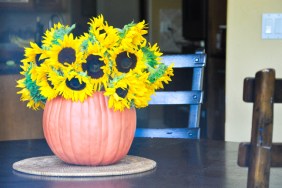When we moved into our house three years ago, I immediately planted a flower garden. I love gardening in general, the feeling of my hands in the dirt, surrounding our home with fresh greenery. When choosing what to plant, I focused on including lots of flowers that are perfect for clipping for bouquets and arrangements in our house.
RELATED: 101 Flower Arranging Tips, Tricks,…








